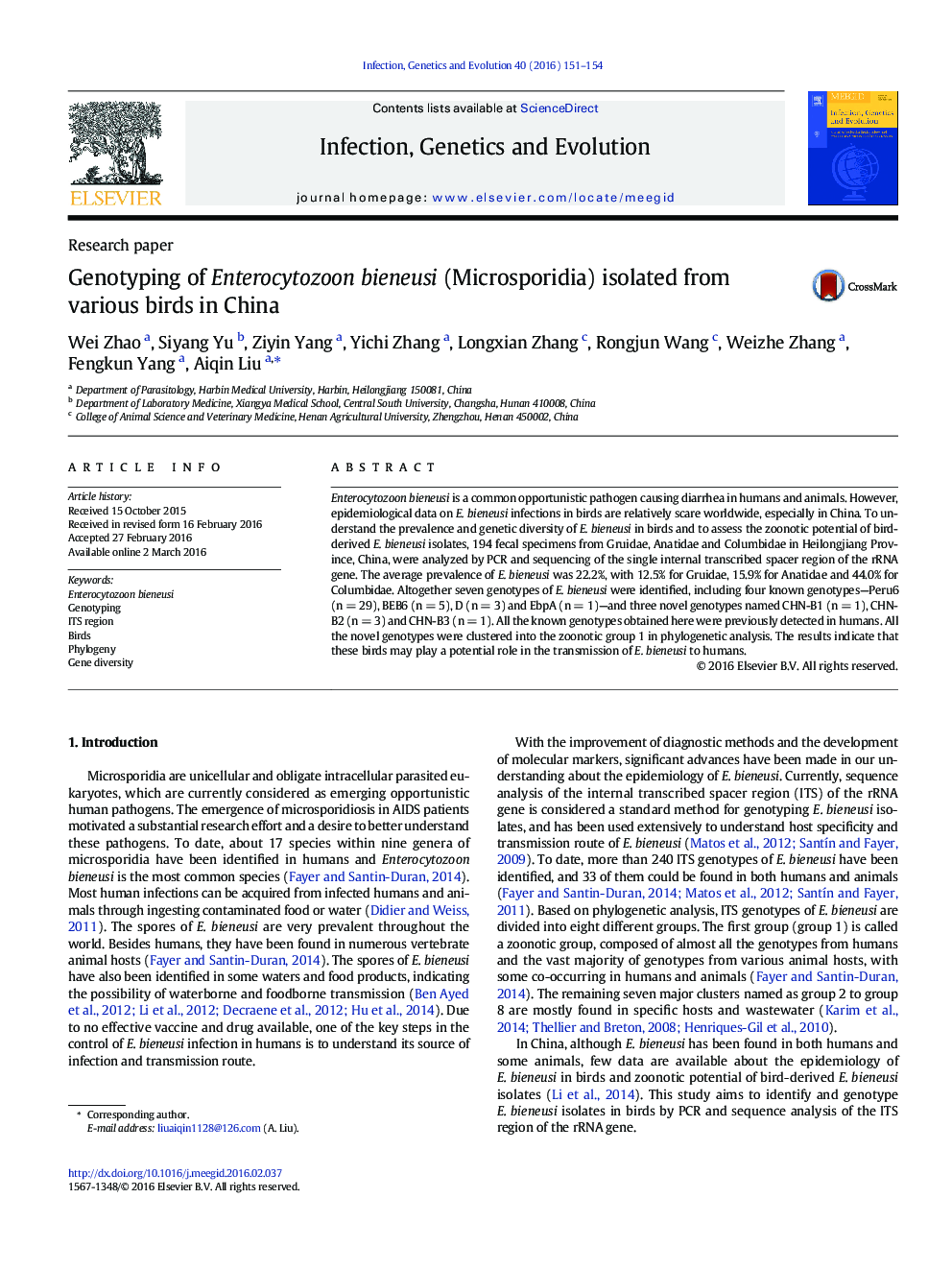| کد مقاله | کد نشریه | سال انتشار | مقاله انگلیسی | نسخه تمام متن |
|---|---|---|---|---|
| 5908310 | 1570163 | 2016 | 4 صفحه PDF | دانلود رایگان |

- E. bieneusi was first reported in various birds in China.
- 22.2% of 194 birds were infected with E. bieneusi.
- Genotyping of the ITS region of the rRNA gene revealed seven genotypes.
- The four known genotypes obtained here were previously detected in humans.
- The three novel genotypes were clustered into human-pathogenic group 1.
Enterocytozoon bieneusi is a common opportunistic pathogen causing diarrhea in humans and animals. However, epidemiological data on E. bieneusi infections in birds are relatively scare worldwide, especially in China. To understand the prevalence and genetic diversity of E. bieneusi in birds and to assess the zoonotic potential of bird-derived E. bieneusi isolates, 194 fecal specimens from Gruidae, Anatidae and Columbidae in Heilongjiang Province, China, were analyzed by PCR and sequencing of the single internal transcribed spacer region of the rRNA gene. The average prevalence of E. bieneusi was 22.2%, with 12.5% for Gruidae, 15.9% for Anatidae and 44.0% for Columbidae. Altogether seven genotypes of E. bieneusi were identified, including four known genotypes-Peru6 (n = 29), BEB6 (n = 5), D (n = 3) and EbpA (n = 1)-and three novel genotypes named CHN-B1 (n = 1), CHN-B2 (n = 3) and CHN-B3 (n = 1). All the known genotypes obtained here were previously detected in humans. All the novel genotypes were clustered into the zoonotic group 1 in phylogenetic analysis. The results indicate that these birds may play a potential role in the transmission of E. bieneusi to humans.
Journal: Infection, Genetics and Evolution - Volume 40, June 2016, Pages 151-154